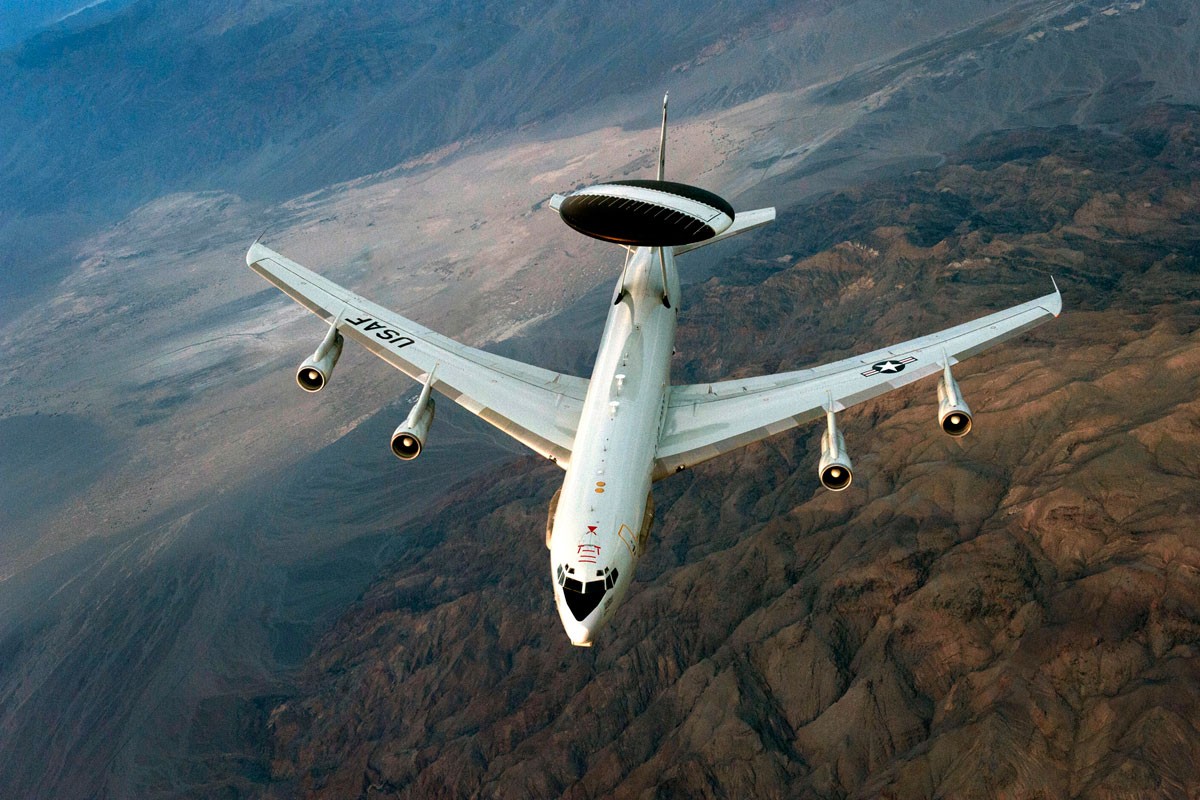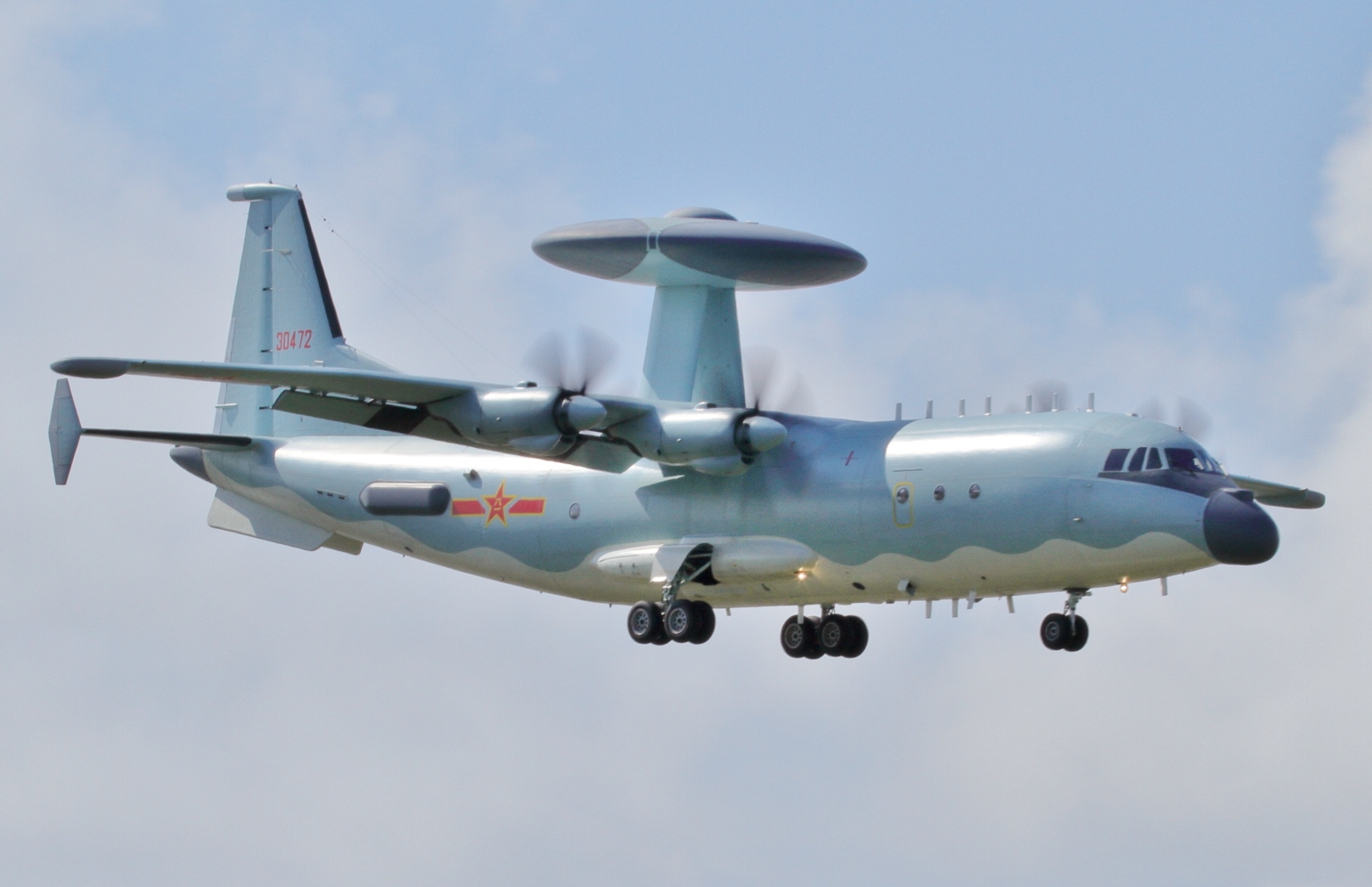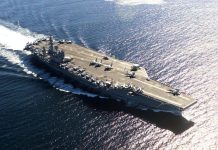In the shadow of the ongoing Russia-Ukraine conflict, a quiet revolution is taking place in China’s military aviation. The world’s second-largest defense spender is rapidly modernizing its “eyes in the sky” – the crucial Airborne Warning and Control System (AWACS) aircraft that serve as flying command centers in modern warfare.
For the past 28 months, the world has been closely observing the Russia-Ukraine war. This conflict has witnessed the deployment of numerous weapons systems, including drones, missiles, and the Airborne Warning and Control System (AWACS).
According to experts, Chinese strategists remain highly interested in the performance of AWACS, in addition to all other weapons systems.
In a recent development, the Chinese social media platform ‘Weibo’ buzzed with sightings of a new variant of the Kongjing-500N long-range radar detection and control aircraft. Spotted among the Northern Fleet of the Chinese People’s Liberation Army Navy, this aircraft is rumored to be the Kunjing-700.
Open-source intelligence (OSINT) images reveal that the new Kongjing-500N features a light bulb-shaped addition to the nose and a new radar system on the underside, similar to the one on China’s Yungan-9 (Shaanxi Y-9) reconnaissance plane.
This revelation follows reports from November 2022 suggesting China is developing next-generation “strategic airborne early warning” aircraft amid escalating tensions with Taiwan, the United States, and regional U.S. allies.
Initially met with skepticism by military experts, these ambitions now seem increasingly plausible. The Kunjing-700 may well be a fruit of these efforts, especially significant given U.S.-imposed obstacles in acquiring foreign radar and AWACS technologies.
This latest development highlights China’s ongoing modernization of its “eyes in the sky” – the crucial airborne early-warning and control (AEW&C) aircraft. Drawing lessons from the Russian-Ukrainian conflict, where AWACS have proven pivotal in guiding combat aircraft and monitoring airspace, China is clearly intent on bolstering its surveillance and detection capabilities.
Recognizing AWACS as a critical force multiplier in modern aerial warfare, China’s focus appears to be on enhancing the aircraft’s resilience against enemy threats. The Kunjing-700 is thus positioned as a versatile asset, capable of simultaneous aerial reconnaissance, electronic countermeasures deployment, air and maritime surveillance, and combat aircraft guidance. This multi-role capability represents a significant leap forward in China’s airborne early warning capabilities.

Lessons From Russia-Ukraine War
The ongoing Russia-Ukraine conflict has exposed a critical vulnerability in modern warfare: the susceptibility of high-value airborne early warning and control (AEW&C) aircraft. In a stunning turn of events, Ukraine has managed to strike at the heart of Russia’s aerial surveillance capabilities, downing two of its prized A-50 aircraft in rapid succession.
The first blow came in mid-January 2024 when Ukrainian forces claimed to have shot down a Russian A-50 over the Sea of Azov. Lightning struck twice on February 23, with Kyiv reporting the destruction of a second A-50 just weeks later. These successes marked a significant shift in the conflict, demonstrating Ukraine’s growing ability to neutralize Russia’s most advanced aerial assets.
The fallout from these incidents has been swift and severe. Russia’s investigative committee has taken the unprecedented step of targeting individual Ukrainian military personnel for their alleged roles in the attacks. Colonel Mykola Dzyaman, a Ukrainian commander, now finds himself in Moscow’s crosshairs, accused of orchestrating the February 23 shootdown.
Russian authorities insist that the downed aircraft were unarmed, non-combatant, and operating strictly within Russian airspace. They claim that Colonel Dzyaman issued an “unlawful order,” resulting in the destruction of one such plane and the deaths of its 10 crew members.
These events underscore the dual nature of AEW&C aircraft in modern conflict – both invaluable assets and potential vulnerabilities. As military powers worldwide, including China, observe these developments, the race is on to develop more resilient and defensible aerial early warning systems.
Advancing China’s AWACS Capabilities
China recognized the importance of developing AWACS after witnessing its pivotal role in the 1991 Gulf War, during which the U.S. Air Force’s E-3 Sentry fleet demonstrated its capabilities.

In response, China introduced the KJ-2000 and KJ-200 in the 2000s, providing capabilities deemed essential, though not at the forefront, for dedicated AWACS operations.
Among its operational AWACS platforms is the KJ-2000, the largest AEW&C platform. It integrates an indigenous Type 88 radar onto a Russian A-50 Mainstay AWACS modified by the Xi’an Aircraft Corporation (XAC).
Additionally, there are ongoing efforts reported on the KJ-3000 project, which aims to enhance capabilities with a modern radar system and advanced electronics mounted on the indigenously developed Y-20A strategic transport aircraft.
Another notable platform is the Shaanxi Aircraft Corporation (SAC) Y-8J, derived from the Y-8 turboprop transport utilized by PLA naval aviation. Initially developed under Project 515 and first observed near Shanghai in 2000, it features a British Skymaster surveillance radar housed in a distinctive bulbous and partially drooped nose radome.
Further expanding its tactical AEW&C capabilities, China operates the Y-8W/KJ-200, based on the Y-8 airframe, with modifications including a solid nose and redesigned tail section.
The KJ-500, based on the Y-9 airframe, serves both the PLA Air Force (PLAAF) and PLA Naval Aviation. Recently introduced is the KJ-600, a twin-turboprop carrier-borne AEW&C aircraft designed to operate from Fujian, equipped with an Electromagnetic Launch System (EMALS) for heavier fixed-wing AWACS operations.
While carriers like the Shandong and the Liaoning, configured with ski-jump ramps (STOBAR), deploy rotary-wing helicopter-mounted AWACS platforms, the Fujian represents China’s advancement towards more sophisticated carrier operations.
As the People’s Liberation Army Navy (PLAN) expands its capabilities with the launch of its third aircraft carrier, the Fujian, designed for “blue water” operations, China continues to enhance its extensive inventory of airborne early warning (AEW) aircraft. This strategic development aligns with China’s broader doctrine of “intelligentized warfare.”
This evolving arsenal places China in a unique position – potentially the only U.S. adversary with truly advanced AWACS capabilities, surpassing even Russia’s aging fleet.
KJ-500: China’s Advanced AEW&C Aircraft
The Kongjing-500, introduced into service in 2015, is also known as the Shaanxi KJ-500 airborne early warning and control (AEW&C) aircraft. It is deployed within frontline units of the Chinese People’s Liberation Army (PLA).

The KJ-500 represents a significant advancement over its predecessors, leveraging improvements in China’s Active Electronically Scanned Array (AESA) and data link technologies. It has the capability to simultaneously track up to 100 targets.
Its radar system, developed by the 38th Research Institute of the China Electronics Technology Group Corporation, is housed within a saucer-shaped dome that also accommodates a satellite communications antenna and two passive electronic intelligence arrays.
Featuring a fixed dorsal rotodome with three triangular radar arrays, the KJ-500 provides full 360° coverage, distinguishing it from earlier Shaanxi KJ-200 AEW&C aircraft. According to Chinese sources, its operational range extends up to 470km.
By early 2018, an estimated 17 KJ-500s were deployed, making it the most numerous in service at that time. Production efforts escalated in subsequent years, with the fleet expanding to an estimated 28 aircraft by 2022, evenly distributed between the air force and naval aviation units.
As AEW&C aircraft significantly enhance combat capabilities across various military services, the KJ-500 has gained prominence, particularly in conjunction with China’s Chengdu J-20, its most high-profile fighter aircraft.
In the realm of aerial surveillance, the ongoing conflict in Ukraine has underscored the critical importance and vulnerabilities of AWACS aircraft. China, attentive to these lessons, is poised to integrate them into its latest designs. The upcoming Kongjing-700 and its peers are anticipated to feature enhanced defensive systems and electronic countermeasures, bolstering their survivability in contested airspace.
As tensions persist in the South China Sea, China’s rapidly advancing AWACS capabilities are poised to assume a pivotal role in potential conflicts. These airborne platforms not only augment China’s ability to detect and monitor threats but also function as crucial nodes in its expanding military network.
Beyond technological advancement, the Kongjing-700 signifies China’s resolve to challenge U.S. air dominance in the Pacific, marking a strategic evolution that could redefine regional dynamics in the years ahead.
- Shubhangi Palve is a defense and aerospace journalist. Before joining the EurAsian Times, she worked for E.T. Prime. In this capacity, she focused on covering defense strategies and the defense sector from a financial perspective. She offers over 15 years of extensive experience in the media industry, spanning print, electronic, and online domains.
- Contact the author at shubhapalve (at) gmail (dot) com.




